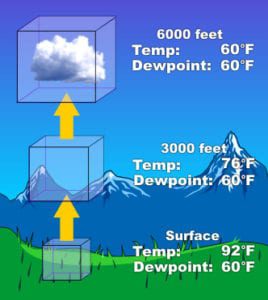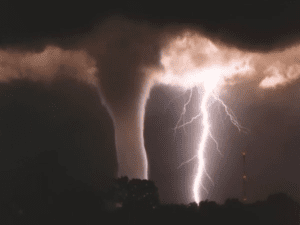Our modern climate stations use a myriad of gadgets and Seussian do-hickeys for tracking, plotting, and predicting nearly any weather characteristic worth monitoring. But for all the advanced technology we have at our disposal, our capacity to reliably predict hail storms remains decidedly poor. As we will explore in Part 1 of this blog series, the reason is certainly not for want of trying.
So, what causes hail storms?
For a hail storm to occur, a precise and complex set of meteorological conditions is required. Of the 10 distinct cloud genera (similar to species) identified by the World Meteorological Organization, hail storms are only produced by one: Cumulonimbus. The word Cumulonimbus is derived from the Latin words for ‘heaped’ and ‘rainstorm’, descriptors that are perfectly apropos. Cumulonimbus clouds are the hulking grey behemoths, stretching high in the troposphere, that we associate with thunderstorms and, to a lesser extent, tornados. Definitely heaped, definitely producing rain, and occasionally producing hail…
Before diving into the cause of hail, it is helpful to understand the relationship between humidity and cloud formation. Humidity, in simple terms, describes the concentration of water vapour in the air. The amount of water vapour that the air can hold changes depending on the air temperature; warm air can hold more, and cold air can hold less. So, on a humid spring or summer day, the absolute quantity of water vapour in the air is at its highest. If through evaporation, the water vapour concentration continues to increase, it will eventually cross the saturation point and condense into microscopic droplets of water. As these microscopic droplets of water clump together, they form what we recognize as clouds.
Cumulonimbus Clouds
The following 3 criteria need to be present:
- Moisture: There must be sufficient water vapour present in the air to condense into liquid water. This is where seasonality comes into play – the warm air in the spring and summer months can hold considerably more moisture, either as water vapour or water droplets, before precipitating back to the ground below.
- Lifting Force: A buoyancy force is required to lift the moist air upwards through the air column. This is supplied by heat from the sun, which heats the ground. As the air close to the ground is warmed by conductive forces, its density decreases and the warmed air parcel begins to rise.
- Unstable Air Mass: This is the most complicated factor – an unstable air mass exists where there is differential heating; i.e., the interaction of air parcels with different thermodynamic properties. Land-water interfaces (like where the coast meets the ocean) or dramatic changes in topography (like the transition from mountain to prairies) are examples of environmental conditions favourable to atmospheric instability.

Final Element of Hail
With the above criteria in place, the final element of the hail storm equation is freezing level elevation. The altitude of the freezing level must be low enough that rain droplets within the cloud have time to freeze into hailstones and remain frozen until they hit the ground. If the freezing level is too high, then hailstones will either melt back into rain on their descent, or else won’t freeze at all. Here we see the importance of both a strong lifting force and an unstable air mass, as both can assist in propelling moist air high into the sky, well above the freezing level altitude.

For the sake of brevity, some of the concepts introduced here have been presented in very simple terms. For instance, a discussion of unstable air masses isn’t really complete without at least a brief mention of adiabatic and environmental lapse rates. However, this does lend credence to the complexity of the topic at hand and has hopefully provided some enlightenment on the complexities involved when chunks of ice suddenly start falling from the sky. Moral of the story: go easy on your local weatherman, it’s a hail of a job.
** DISCLAIMER: This is the 1st in a 3-part blog series on all things hail related, check back for Part 2 – a case study on what causes the devastating conditions in ‘Hailstorm Alley’
Written by Taylor Gallivan

